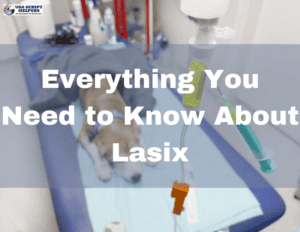Ensuring the happiness and health of our furry friends is crucial when it comes to pet care. Owners of treasured pets go to considerable lengths to give them the best care possible, from routine checkups to a balanced diet. Pets can, however, become sick or develop illnesses that call for medical attention, just like people. Cephalexin is an essential drug for maintaining the health of pets. In this blog, we’ll explore Cephalexin’s definition, mechanism of action, applications in veterinary care, and importance as a vital component of pet healthcare.
What is Cephalexin and How Does it Work?
Cephalexin is an antibiotic known as cephalosporin, frequently prescribed for use in people and animals. It is an antibiotic that falls within the beta-lactam class, which prevents bacteria from growing within the body. Cephalexin is a flexible option for treating various conditions in pets because it works well against a broad spectrum of bacterial infections.
It works by obstructing the bacterial cell wall’s synthesis, which eventually results in cell death. Bacterial cell walls offer protection and structural integrity, essential for survival. It effectively fights bacterial infections by interfering with this process, making it easier for the body’s immune system to eliminate any leftover bacteria.
Uses of Cephalexin for Pets
Cephalexin is often given to dogs, cats, and other pets with bacterial illnesses to help them get better. It is an adaptable option for treating various diseases in pets due to its broad-spectrum activity and relative safety. Let’s take a closer look at a few typical applications of Cephalexin in veterinary medicine:
-
Skin Infections
Vet visits for skin infections are typical. Pyoderma, bacterial skin infections in dogs and cats, causes redness, itching, bumps, and hair loss. These infections might result from allergies, parasites, or trauma. It is often recommended for Staphylococcus intermedius and Streptococcus canis skin infections. It relieves pain and heals skin by eradicating the bacterial source, restoring the pet’s coat and skin.
-
Urinary Tract Infections
UTIs are another prevalent pet illness, especially in female dogs and older cats. UTIs can cause frequent urination, straining, blood in urine, and urinary accidents. These infections are commonly caused by Escherichia coli and Proteus mirabilis. This medicine treats pet UTIs by killing germs and decreasing urine pain. To diagnose a UTI and establish Cephalexin treatment, urine and culture are essential.
-
Respiratory Infections
Pneumonia, kennel cough, and bronchitis can affect dogs and cats of any age. Coughing, sneezing, nasal discharge, and lethargy are common signs of these diseases. Bacteria like Bordetella bronchiseptica and Pasteurella multocida can cause pet respiratory illnesses. Bacterial respiratory infections can be treated with this medicine alone, along with cough suppressants or bronchodilators. Urgent Cephalexin treatment can relieve respiratory symptoms and avoid bacterial infections.
-
Soft Tissue Infections
Wounds, bites, abscesses, and surgical incisions cause soft tissue infections in pets. These infections can cause regional swelling, discomfort, and inflammation if ignored. Pet soft tissue infections often involve Staphylococcus aureus and Pasteurella multocida. Cephalexin is a first-line treatment for such diseases, removing bacteria and promoting tissue recovery. Pet soft tissue infections require antibiotics, wound cleaning, debridement, and bandaging.
-
Dental Infections
Dental difficulties are common in pets, especially older ones, despite their importance to their health. Bacterial gum and tooth infections can result from plaque and tartar buildup. Systemic disorders and tooth loss can result from untreated oral infections. In addition to scaling, polishing, and extractions, this medication can be administered to treat oral bacterial infections. Treating bacterial dental infections improves pet oral health and prevents further tooth damage.
Dosage and Administration of Cephalexin
To ensure safety and efficacy, medicine administration for pets must be carefully thought out regarding dosage and delivery techniques. The weight, age, and severity of the infection are some parameters that usually determine how much it is prescribed for pets. Even if the pet’s symptoms subside before the course of therapy is up, it’s imperative to adhere to the veterinarian’s recommendations precisely and finish the entire dosage.
Cephalexin is easy to give to pets because it comes in various formats, such as pills, capsules, and oral solutions. Medication can be blended with food or masked in treats to encourage ingestion in pets who have trouble swallowing pills. To guarantee correct absorption and medicine efficiency, confirming with the veterinarian about the acceptability of such approaches is crucial.
Safety Considerations
Although it is generally safe and well-tolerated in pets, owners must be aware of potential side effects and take precautions to protect their dogs. When using Cephalexin in veterinary medicine, keep the following safety factors in mind:
-
Allergic Reactions
Like any drug, It may cause allergic reactions in pets. Allergic responses can cause itching, hives, face swelling, breathing problems, and anaphylaxis. Soon after starting therapy, pet owners should watch for allergic reactions. Such indications require immediate veterinary intervention. Alternative treatments should be considered for cephalosporin hypersensitivity.
-
Gastrointestinal Upset
It can cause nausea, vomiting, diarrhea, and appetite loss in pets. Although moderate and temporary, these side effects can be concerning if they persist or worsen. Cephalexin-treated pets should be monitored for gastrointestinal upset. Cephalexin with meals or probiotics may improve gastrointestinal symptoms and tolerance. Veterinary consultation is recommended to determine dose adjustment or alternative treatment if severe or persistent gastrointestinal difficulties occur.
-
Drug Interactions
It may interact with drugs or supplements, decreasing its efficacy or producing side effects. Pet owners should tell the vet about all their pets’ medications, including over-the-counter supplements and herbal therapies. Since it is mainly eliminated through the kidneys, medications that impact renal function are of concern. Avoid kidney harm by carefully evaluating nephrotoxic or renal blood flow-altering medicines. It should be given with other medications under veterinary care to avoid drug interactions and protect the pet.
-
Antibiotic Resistance
Veterinary medicine is concerned about antibiotic resistance because overuse or misuse can cause resistant bacterial strains. Like other antibiotics, it should be taken sparingly and as directed by a vet. If the pet’s symptoms improve before the regimen is finished, owners should follow the dosage and period. Antibiotic-resistant bacteria can develop after abrupt termination or insufficient therapy, making subsequent infections harder to treat. To reduce antibiotic resistance and improve treatment outcomes, veterinarians may propose culture and sensitivity testing to determine the best antibiotic treatment for certain bacterial illnesses.
Using Cephalexin as a Wellness Prescription for Dogs
In conclusion, Cephalexin is an essential drug for dog health and happiness. It can relieve symptoms and promote recovery for skin, urinary tract, respiratory, and soft tissue infections. Use this medication carefully and under veterinary supervision to give your pet the best results. The correct dosage and monitoring can keep your pet healthy for years.
USA Script Helpers understands the unique link between dogs and their owners and provides high-quality pharmaceuticals to promote their health. Discover how Cephalexin can improve your pet’s life with our dedication to quality and customer service. Visit USA Script Helpers today to start your pet’s healthier, happier future.


















